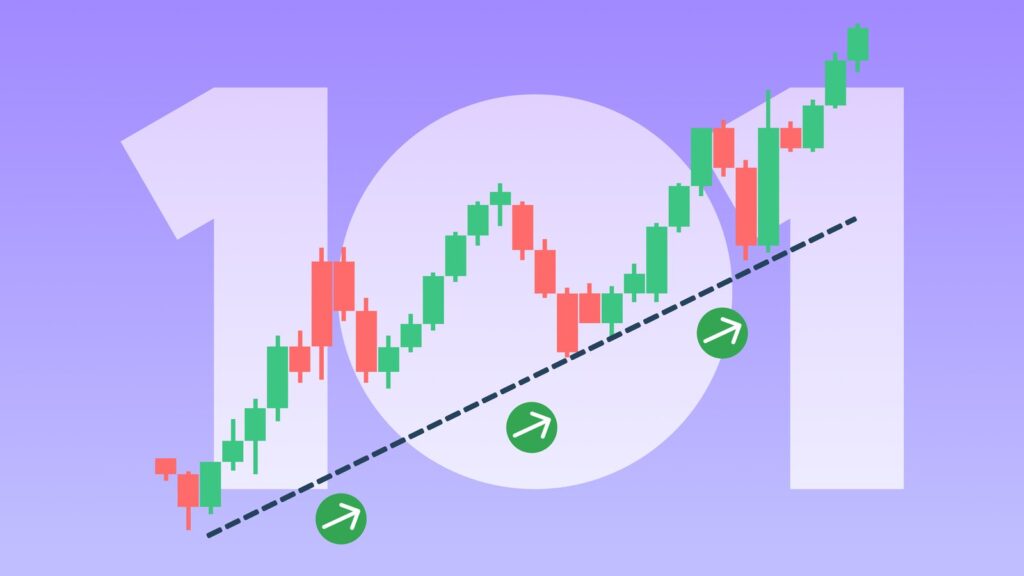The stock market. For many, the phrase conjures images of frenzied trading floors, flickering digital screens, and the dizzying ascent and descent of company valuations. It can seem like a mysterious, even intimidating, realm accessible only to financial titans. However, stripping away the jargon and complexity reveals a fundamentally simple, yet powerful, mechanism that underpins global capitalism and offers incredible opportunities for ordinary individuals to build wealth.
This beginner’s guide aims to demystify “how the stock market works.” We’ll break down its core components, explain the roles of key players, and illuminate the forces that drive this dynamic financial ecosystem. Understanding these basics is the foundational step for anyone aspiring to become a confident and successful investor.
1. The Core Idea: Why Companies Issue Stocks
The journey of a stock begins with a company’s need for capital (money). Businesses require funds to expand operations, develop new products, hire more staff, or pay off debts. They have two primary ways to raise significant capital:
- Borrowing (Debt): Taking out loans from banks or issuing bonds. This creates a liability that must be repaid with interest.
- Selling Ownership (Equity): Selling small pieces of the company’s ownership to investors. These pieces are called shares or stocks.
When a private company decides to offer its shares to the public for the first time, it undergoes an Initial Public Offering (IPO). This is a significant milestone, marking its transition from a private entity to a publicly traded company. By selling shares, the company receives a large infusion of cash, and in return, the investors who buy those shares become shareholders – part-owners of the company.
Key takeaway: The stock market facilitates a crucial exchange: companies raise capital for growth, and investors gain a potential share in that growth.
2. The Marketplace: Stock Exchanges and Brokerages
Once shares are issued in an IPO, they begin trading on stock exchanges. Think of an exchange as a highly organized, digital marketplace where buyers and sellers of shares meet. Prominent examples include:
- New York Stock Exchange (NYSE): Known for its “auction market” style where specialists facilitate trades.
- Nasdaq: A fully electronic exchange, heavily favored by technology companies.
- London Stock Exchange (LSE), Tokyo Stock Exchange (TSE), Euronext: Major exchanges across the globe.
These exchanges provide the regulated infrastructure that ensures fair and orderly trading.
How individuals participate: You, as an individual investor, don’t directly buy or sell shares on the exchange. Instead, you use a brokerage firm. A brokerage firm (like Charles Schwab, Fidelity, Vanguard, Robinhood, eToro, etc.) acts as your intermediary. You open an investment account with them, deposit funds, and then use their platform (website or app) to place buy and sell orders for stocks. The brokerage then executes these orders on your behalf on the appropriate stock exchange.
Key takeaway: Stock exchanges are where shares are traded, and brokerage firms are your gateway to accessing those exchanges.
3. Supply and Demand: What Drives Stock Prices
The most fundamental force determining a stock’s price at any given moment is the classic economic principle of supply and demand:
- High Demand, Low Supply = Price Rises: If more investors want to buy a particular stock than sell it (perhaps due to positive company news, strong earnings, or optimistic market sentiment), the stock’s price will generally increase. Buyers are willing to pay more to acquire shares.
- Low Demand, High Supply = Price Falls: Conversely, if more investors want to sell a stock than buy it (due to negative news, poor earnings, or general market pessimism), the stock’s price will generally decrease. Sellers lower their asking price to find buyers.
This constant push and pull between buyers and sellers, occurring minute by minute during trading hours, is what causes stock prices to fluctuate.
Beyond supply and demand: Underlying factors: While supply and demand dictate short-term movements, the long-term direction of a stock’s price is heavily influenced by fundamental factors related to the company’s performance and prospects:
- Company Earnings & Profitability: Strong, consistent profits and revenue growth are key indicators of a healthy business.
- Financial Health: A solid balance sheet (low debt, ample cash).
- Management Quality: Competent and ethical leadership.
- Industry Trends: Is the company operating in a growing or declining sector?
- Economic Conditions: Broader economic health (e.g., inflation, interest rates, GDP growth) can impact all companies.
- Investor Sentiment: The collective mood of investors, which can sometimes lead to irrational exuberance (bubbles) or excessive pessimism (crashes).
4. Making Money (or Losing It) in the Stock Market
There are two primary ways investors make money from stocks:
- Capital Appreciation: This is when the price of the stock increases. If you buy a share for $100 and sell it for $120, you’ve made a $20 capital gain. This is the most common way investors profit.
- Dividends: Some mature, profitable companies choose to distribute a portion of their earnings directly to shareholders in the form of regular payments (typically quarterly). Not all companies pay dividends, particularly younger, growth-oriented companies that prefer to reinvest all profits back into the business.
Losing Money: You lose money if the stock price falls below your purchase price and you sell it. This is called a capital loss.
Important Note: The Long-Term Perspective: While daily price movements can be erratic, the stock market has historically trended upwards over long periods (decades). Short-term fluctuations are normal, but patient, long-term investors benefit from the overall growth of the economy and corporate profits. This is why the adage “time in the market is more important than timing the market” holds true.
5. Types of Orders and Basic Jargon
When you place a trade with your broker, you’ll encounter different order types:
- Market Order: An order to buy or sell a stock immediately at the best available current price. This ensures execution but doesn’t guarantee a specific price.
- Limit Order: An order to buy or sell a stock at a specific price or better. Your order will only execute if the stock reaches your specified price. This guarantees a price but not execution.
Some basic jargon you’ll encounter:
- Bid Price: The highest price a buyer is willing to pay for a stock.
- Ask Price (Offer Price): The lowest price a seller is willing to accept for a stock.
- Spread: The difference between the bid and ask price.
- Volume: The number of shares traded in a given period. High volume often indicates strong interest.
- Volatility: The degree of price fluctuation of a stock or the market. High volatility means prices swing dramatically.
- Bull Market: A period when stock prices are generally rising, characterized by optimism.
- Bear Market: A period when stock prices are generally falling (a sustained decline of 20% or more), characterized by pessimism.
6. Getting Started as a Beginner Investor
- Educate Yourself: Continuously learn about personal finance, investing principles, and how businesses work.
- Define Your Goals: What are you investing for (retirement, house, education)? This dictates your time horizon (how long you’ll invest) and risk tolerance (how much volatility you can handle).
- Build an Emergency Fund: Before investing, ensure you have 3-6 months of living expenses saved in an easily accessible, low-risk account.
- Pay Off High-Interest Debt: Credit card debt or other high-interest loans are financial liabilities that can far outweigh investment gains.
- Open a Brokerage Account: Choose a reputable online brokerage firm with low fees (ideally commission-free trading for stocks/ETFs) and a user-friendly platform.
- Start with Diversified Funds: For beginners, low-cost Exchange-Traded Funds (ETFs) or index mutual funds are ideal. They offer instant diversification across many companies, industries, and geographies, reducing risk.
- Invest Consistently (Dollar-Cost Averaging): Set up automatic transfers to invest a fixed amount regularly. This builds discipline and smooths out market fluctuations.
- Think Long-Term and Be Patient: Don’t panic during market downturns. History shows that resilient businesses and diversified portfolios tend to recover and grow over decades.
Conclusion: Your Journey to Financial Empowerment
The stock market, rather than being an enigma, is a powerful engine of wealth creation driven by the fundamental exchange between companies needing capital and investors seeking growth. By understanding these basics – how shares are issued and traded, the role of supply and demand, the types of returns, and the importance of diversification and a long-term perspective – you’ve already taken the most critical step. The journey of investing is continuous learning, but with a solid grasp of these fundamentals, you are well-equipped to navigate its exciting landscape and build a more secure financial future.




